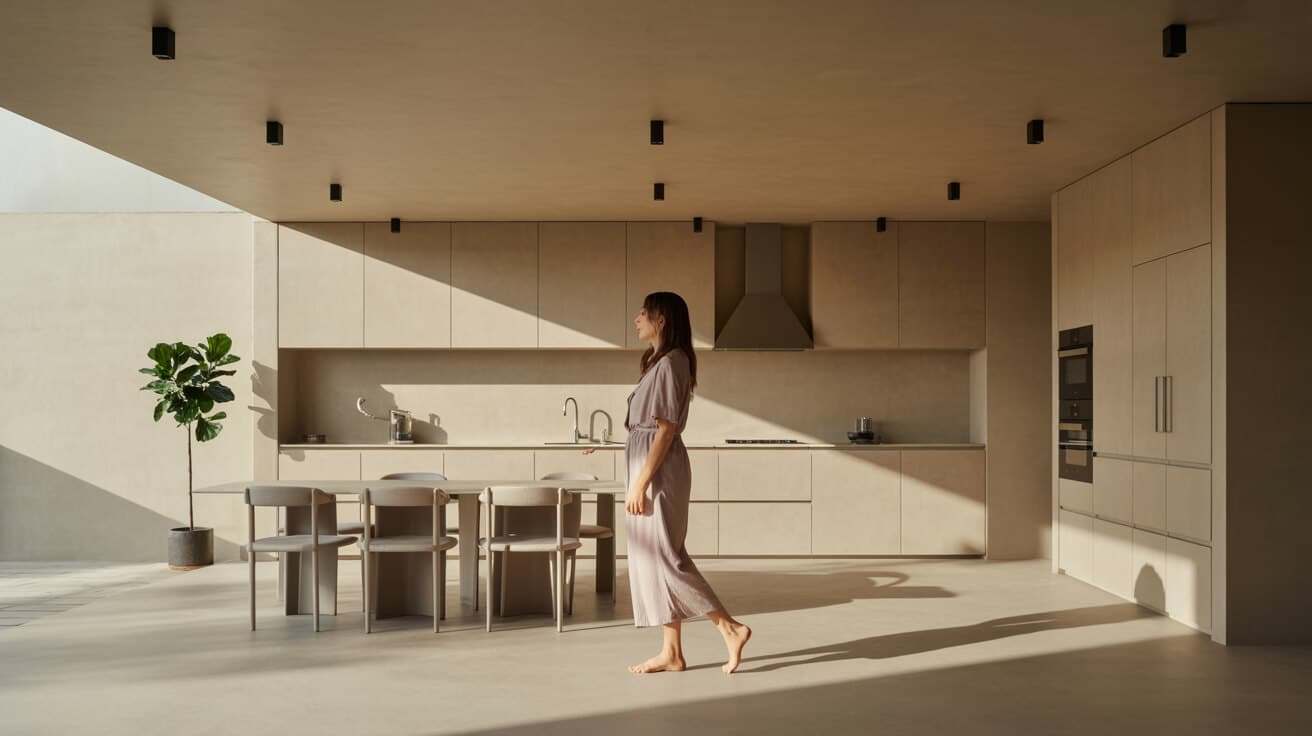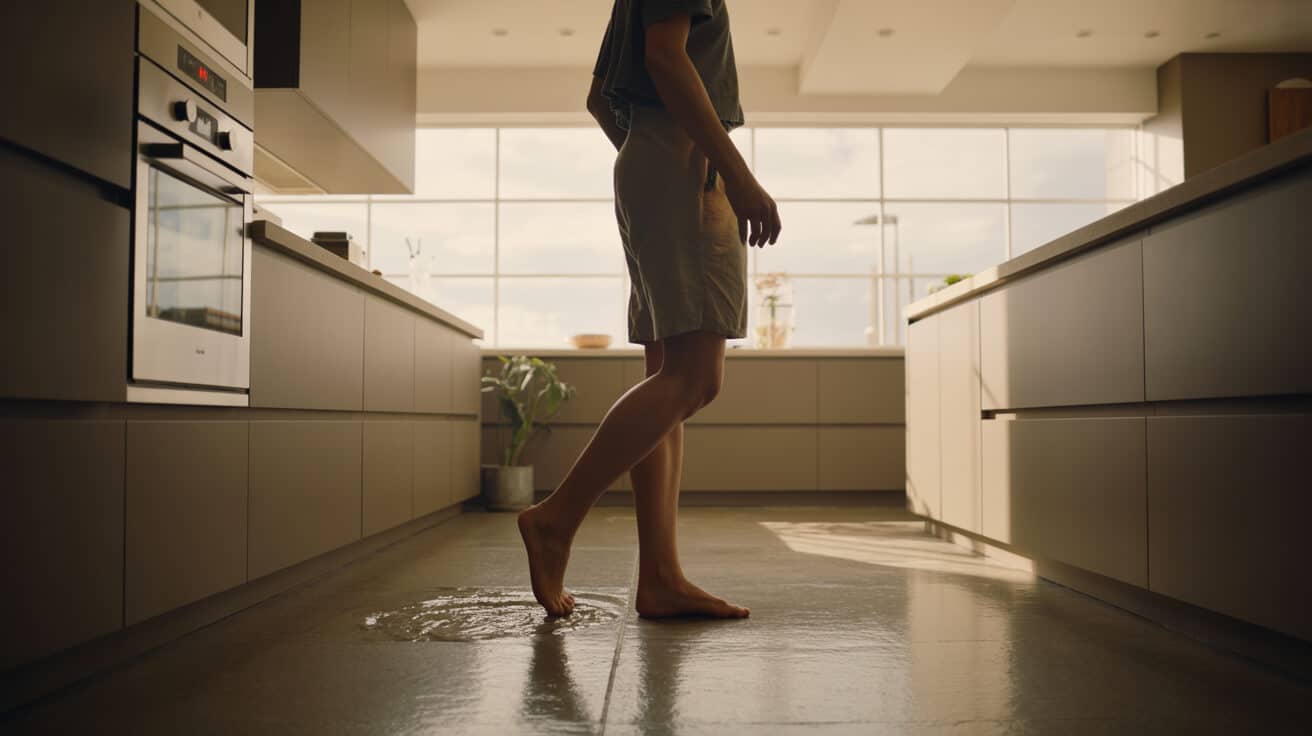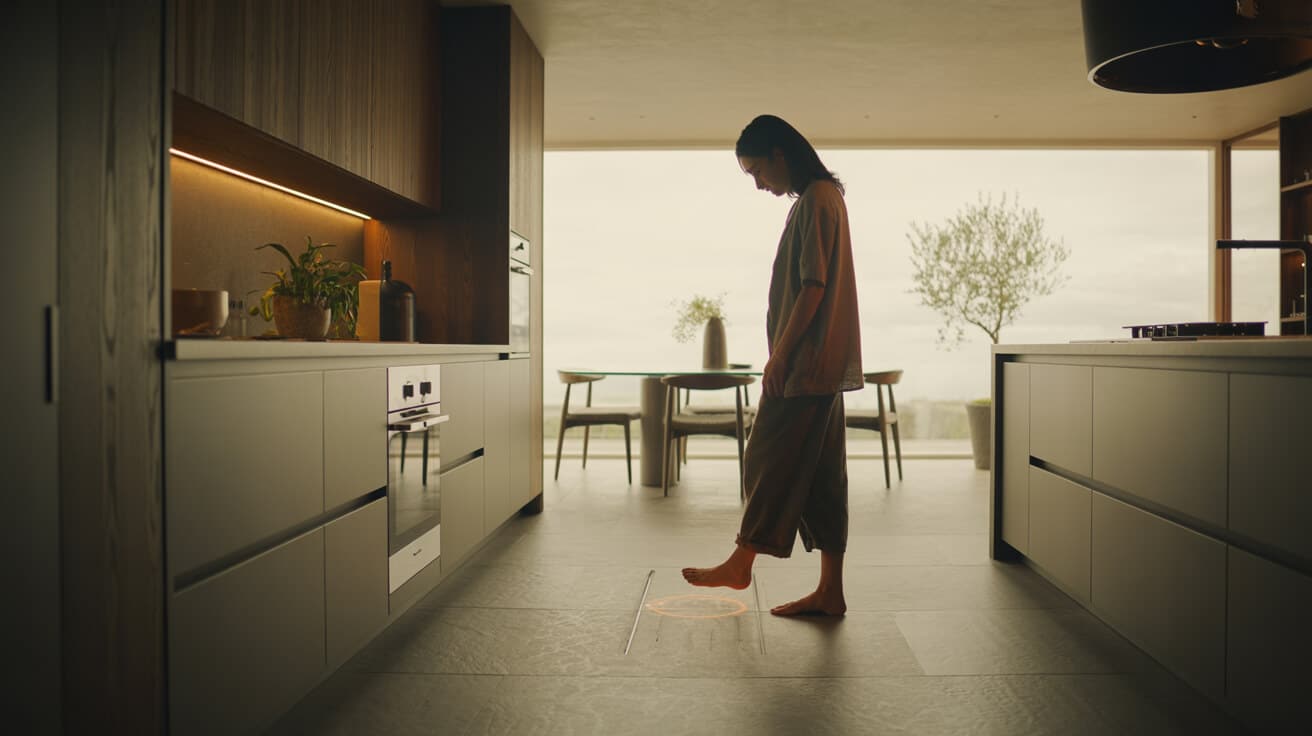Non-uniform temperature output in underfloor heating systems arises when certain areas of a floor remain cooler or heat up slower than intended, diverging from design specifications. Such inconsistencies impair overall thermal comfort, perceived system quality, and can increase operational costs. The effects extend from private homes to large commercial or institutional buildings, where performance guarantees and regulatory compliance are central to managing risk and occupant expectations.
Etymology or Name Origin
The phrase “underfloor heating” combines the literal description of heat delivery beneath the walking surface with terminology rooted in both engineering and marketing. Early adoption favoured expressions such as “radiant floor heating” in North America and Europe, before “underfloor” became the dominant trade term in British and Commonwealth contexts. “Hydronic” derives from the Greek hydro- (water), signalling the use of fluid for heat transfer, contrasting with electric mat or cable systems. “zoning” is borrowed from building control vocabulary, referencing the segmentation of mechanical services into independent, controllable areas.
Overview / Context
Modern underfloor heating is a concealed heat emission system embedded in the floor structure, functioning through hydraulic (water-based) or electric elements that spread warmth evenly by radiant and convective means. Instead of relying on direct air heating, these solutions efficiently exploit the properties of floor finishes, reducing temperature stratification and improving room-by-room comfort. Patterns of adoption show high prevalence in both residential and commercial buildings, particularly for new constructions, high-end refurbishments, and accessibility upgrades. Increasing regulatory requirements for energy efficiency and the growing popularity of invisible heating drive adoption further; however, the concern for even distribution remains a persistent challenge for market trust and long-term asset viability.
History
Origins
The origins of radiant floor heating trace back to ancient civilisations. The Roman hypocaust used open spaces beneath floors and walls to channel heat from wood-fired furnaces, while the Korean ondol system featured heated flues under stone floors. Such ingenious but rudimentary technologies reflect humanity’s ongoing quest for controllable, even warmth, often reserved for elite or ceremonial spaces.
Industrial Emergence
By the nineteenth century, advances in metallurgy and fluid mechanics enabled the first true water-based radiant floors. The late 1800s and early 1900s witnessed the first piped systems in Europe and North America, albeit plagued by leaking pipes and poor insulation. It was not until the postwar boom in plastics, with the advent of cross-linked polyethylene (PEX) and similar innovations, that underfloor heating became a practical standard in large-scale building projects and high-end residential developments.
Contemporary Evolution
Contemporary underfloor heating flourished with the invention of modular manifolds, programmable controls, and the codification of system design under standards like BS EN 1264. The integration of smart thermostats, compatibility with heat pumps, and advances in quick-cure screeds have made installation both more efficient and more complex. Today, the principal industry challenge remains translating engineering reliability and technical uniformity into accessible, long-term comfort for both domestic and commercial occupants.

Concept / Description
Core System Elements
Most underfloor heating systems consist of a heat generator (such as a gas boiler, air source heat pump, or electric resistance system), a manifold acting as distribution hub, looped pipework or heating cables, insulation beneath, and a conductive floor layer (screed, tile adhesive, or concrete). Surface thermostats or room sensors, often networked for digital scheduling, provide feedback to regulate flow and output in real time. A typical hydronic system circulates water between 35–55°C, while electric variants modulate wattage and time based on surface temperature and user demand.
Zoning and Control Strategy
Larger or more irregular spaces rely on dividing the heating array into discrete zones, each governed by an independent thermostat and actuator. Zoning ensures tailored comfort for users with diverse routines, such as offices, multi-generational homes, or hospitality venues. Key mechanisms include motorised manifold actuators, electronic thermostats, and, in advanced installations, building management system integration. The science and art of balanced flows—guaranteeing requisite heat in each loop—relies on precise calculations and regular recalibration to compensate for property modifications or occupancy changes.
Functionality / Purpose / Applications
Thermal Comfort and Principle
Underfloor heating is engineered to maximise spatial comfort by keeping floor surface temperatures within a narrow, desirable range. Radiant emission warms the occupant directly as well as the air mass, reducing cold spots and temperature differences common with convection-based systems. For sensitive applications, such as assisted-living environments or high-traffic offices, even heat is not just a feature—it is a necessity for health and safety.
Deployment Scenarios
Adoption patterns reflect considerations of cost, comfort, property type, and architectural priorities:
- New home construction: developer-installed systems as default heating
- Bathroom and kitchen upgrades: electric mat systems facilitating rapid, targeted warmth
- Commercial settings: large, open-plan offices or hotels using multi-zone hydronic systems
- Heritage and luxury renovations: seamless integration to preserve aesthetics
Whether as a primary heat source or a comfort-enabling supplement, the breadth of applications necessitates attention to both system design and ongoing performance.
Classifications / Types / Variants
System Types
Hydronic (Water-based)
- Uses closed-loop water through high-efficiency pipes
- Requires mixing valves, pumps, and a manifold for configuration and balancing
Electric
- Thin cable or mat installed under or within tiles, vinyl, or screed
- Typically easier for retrofits or single-room deployments, but with distinct power management demands
Hybrid and Specialist
- Hybrid systems blend both technologies, or combine radiant floor with wall, ceiling, or perimeter heat
- Variants such as air-heated floors or solar thermal integrations serve niche requirements
Control Variants
- Single-zone versus multi-zone systems
- Standalone programmable thermostats or integrated smart controls
- Integration with renewable sources (heat pumps, solar-assisted, or low-temperature boilers)
| System Feature | Hydronic | Electric |
|---|---|---|
| Typical Application | Whole house | Single rooms |
| Running Cost (UK, typical) | Lower | Higher |
| Installation Complexity | Higher | Moderate |
| Maintenance Frequency | Yearly/Periodic | Minimal |
| Zoning Options | Extensive | Yes, limited |
Systems / Tools / Methodologies
Installation Tools & Protocols
Proper installation is predicated on site surveys, architectural coordination, and the use of specialist tools:
- Pipe cutters, pressing or compression pliers
- Manifold keys and flow metre adjustment tools
- Pipe uncoilers, layout spacers, or mesh grids for consistent pipe spacing
- Insulation tape and expansion foam for perimeter and sub-floor preparation
A meticulous adherence to manufacturer guidelines and regulatory requirements sets a baseline for future performance.
Monitoring & Diagnostic Tools
- thermal imaging cameras for floor surface mapping
- Digital flow metres (to measure and balance each loop)
- Water quality test kits (evaluate inhibitor concentration, pH, presence of sludge)
- Smart control system apps and data loggers
- Manifold balancing charts for visualising system equilibrium
Deficiencies in installation, as well as changing conditions, can be quickly detected with consistent, professional-grade diagnostic methods.

Stakeholders / Entities Involved
Industry Roles
- Designers: establish calculated loop lengths, spacing, and heat demand per room
- Installers: execute all mechanical and electrical work, commission the system, and provide documentation
- Service engineers: perform ongoing maintenance and troubleshooting, including balancing, actuator testing, and flushing
- Property managers/landlords: oversee adherence to maintenance standards and demonstrate compliance with relevant legislation
- Manufacturers: offer technical guidance, produce updates to controls and materials, and respond to defect notifications
Manufacturer & Regulatory Involvement
Well-regarded brands (e.g., Uponor, Polypipe, Nu-Heat in the UK) advocate for rigorous testing and routine recalibration. Regulatory agencies enforce standards through both national (BS EN 1264) and property-specific (Building Regs L/G/E, MEES) mechanisms. The presence of a trustworthy and service-transparent installer—such as Plumbers 4U—adds credibility and assurance to all parties.
Legal / Regulatory / Ethical Considerations
Codes & Compliance
Design, installation, and ongoing management must align with multiple frameworks:
- BS EN 1264: (water-based radiant heating): stipulates calculation methods, installation, testing, and commissioning procedures
- Building Regulations, Part L: (conservation of fuel): outlines efficiency requirements for heating controls, insulation, and commissioning documentation
- Part G: (sanitation, hot water supply): includes safety and maximum surface temperature guidance
- Guidelines from Water Regulations Advisory Scheme (WRAS), local building control, and insurance agencies
Landlord & Commercial Duties
Legal and regulatory landscapes require that:
- Landlords ensure heating systems are safe, effective, and documented
- Commercial facilities managers complete periodic inspections, maintain logs, and dispatch remedial engineers promptly
- Compliance lapses can result in regulatory penalties, higher insurance premiums, or legal action from tenants
Ethical / Best Practice Dimensions
Ethical standards in underfloor system installation reflect a commitment to transparency, quality of workmanship, and client education. Responsibilities include:
- Maintaining professional liability coverage for design and instal
- Documenting all works and adjustments
- Educating the property owner or manager on system function, warning indicators, and solution pathways
- Procuring WRAS-approved materials and documenting compliance with manufacturer-issued updates
Performance Metrics / Data / Measurements
System Performance Benchmarks
Key indicators include:
- Temperature uniformity: Measured by surface grid mapping; expected deviation is typically less than ±1.5°C
- Heat-up time: Time (minutes) from system activation to equilibrium temperature
- Flow rate per loop: As specified in design documents
- System pressure: For hydronic systems, stability over time signals correct filling, no airlocks, and minimal leakage
- Energy consumption: Monitored through smart metres, tracked by zone or room for high granularity
Detection & Measurement Techniques
Professional validation includes:
- Thermal imaging: Identifies cold patches, flow blockages, and loop failures disproportionately affecting specific areas
- Flow metering: Confirms that each manifold circuit delivers specified volume per minute
- Actuator and thermostat response tests: Ensure that field devices signal and operate correctly
- Visual and acoustic inspection: Detects leaks, unexpected pump noise, and signs of water quality deterioration
Challenges / Barriers / Limitations
Operational or Technical Issues
- Airlocks and sludge formation: Trapped air blocks water flow, causing cold zones; sludge buildup reduces efficiency and can eventually block pipes
- Actuator, pump, or manifold fault: Mechanical or electronic failure impairs system responsiveness and can restrict heating to affected loops
- Insulation and build technique: Poor subfloor insulation allows heat losses, while incorrect screed depth or composition alters heat transfer rates
- Control system limitations: Incompatible or poorly programmed thermostats and manifolds exacerbate uneven outcomes
Social or Economic Factors
- Cost sensitivity: Reluctance to pursue full diagnostics/remediation
- Disruption concerns: Fear of intrusive repairs causes delay in addressing minor symptoms
- Awareness and knowledge gaps: Tenants and property managers may misinterpret or underreport symptoms, especially absent robust service records
Philosophical or Policy Considerations
- Accessibility: Once floors are finished, repairs and improvements are costly or structurally challenging
- Regulatory expectations: Emerging policies push for enabling higher efficiency and post-occupancy validation, raising the bar for deliverable system performance
- Sustainability: Greater emphasis on lifecycle asset value and carbon emissions creates incentive for rapid identification and resolution of heating imbalance
Impact / Influence / Legacy
On Property Value & Experience
- Efficient, uniform underfloor heating supports higher EPC ratings, improved occupant comfort, and makes spaces attractive for prospective buyers, renters, or employees
- Poorly maintained or problematic systems impede asset value and undermine satisfaction, especially in premium developments, hospitality, or elder care contexts
Industry Evolution
- The prevalence of uneven heating complaints has led to widespread adoption of digital commissioning tools, more sophisticated hydronic balancing equipment, and user-training initiatives
- Trustworthy companies such as Plumbers 4U often become long-term service partners, maintaining compliance logs and providing confidence through verified documentation
Sustainability & Broader Implications
- High-performing, well-maintained systems enable adoption of lower temperature heat sources, supporting the market shift to electrified, renewable-based heating solutions
- Modern regulatory frameworks incentivise—and in some instances require—documented performance verification and ongoing digital reporting structures
| Impact Category | Positive Outcomes | Risks of Unaddressed Unevenness |
|---|---|---|
| Occupant Comfort | Full, even warmth, improved air quality | Hot/cold spots, customer complaints |
| Asset Value & Marketability | Enhanced EPC, premium pricing/sale | Value loss, compensation claims |
| Sustainability & Carbon Impact | Enables low-temp, eco-friendly sources | Wasted energy, carbon excess |
| Brand Reputation | Trusted compliance, long-term client loyalty | Negative reviews, legal disputes |
Future directions, cultural relevance, and design discourse
Emerging design philosophies and policy initiatives emphasise adaptive, data-driven system balance, ensuring your comfort remains consistent regardless of layout or seasonal shifts. Next-generation systems integrate dynamic wireless sensors, automated flow adjustment, and predictive diagnostic analytics—making identification of uneven heating practically instantaneous.
Culturally, radiant floor systems now represent a convergence of wellness, minimalism, and sustainability. The expectation for seamless, invisible comfort without operational anxiety is shaping both regulation and marketing. Facilities managers and property professionals are increasingly turning to integrated smart controls, professional service programmes and verifiable commissioning logs as status symbols and quality guarantees. Innovations in modular installation, self-balancing manifolds, and hybrid renewable systems point to a future of more flexible, resilient infrastructure.
As stakeholders across the value chain—designers, installers, landlords, smart home companies, and solution providers like Plumbers 4U—pursue these advances, your company is better positioned to provide reliably uniform performance. The drive for excellence becomes both a professional imperative and a culturally embedded benchmark, shaping industry evolution while protecting your property’s comfort, value, and efficiency.

